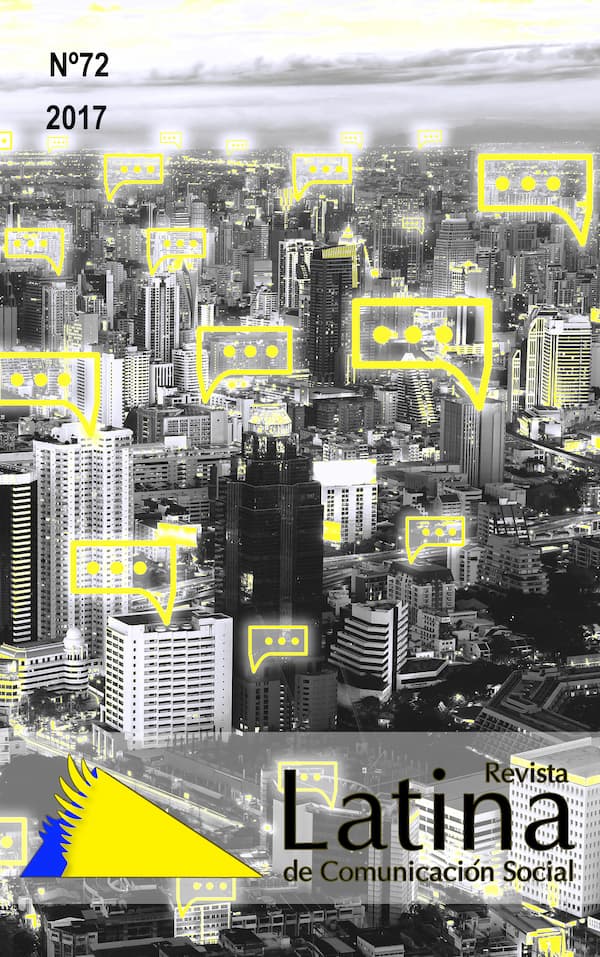Transparency and political monitoring in the digital environment. Towards a typology of citizen-driven platforms
DOI:
https://doi.org/10.4185/RLCS-2017-1223Keywords:
political communication, transparency, monitoring, digital mediaAbstract
The digital landscape has facilitated the development of new mechanisms that help citizens to exercise transparency, which is linked to political monitoring and contributes to the redefinition of political communication and participation. Methods: The study is based on the case study technique, applied to five digital initiatives, to analyse the forms taken by citizen-driven transparency-based digital platforms oriented towards the monitoring of the centres of power. Results and conclusions: The results indicate that there are five types of platforms according to their main purpose and the transparency dimension they cover. These modalities focus on open government data, news of public interest, dissemination of diverse ideas and points of view, responses from political actors, and citizen participation in political decision-making processes.
Downloads
References
Bunz, M. (2014): The silent revolution: How digitalization transforms knowledge, work, journalism and politics without making too much noise. Nueva York: Palgrave Macmillan.
Casero-Ripollés, A. & López-Meri, A. (2015): “Redes sociales, periodismo de datos y democracia monitorizada”, en Las redes sociales digitales en el ecosistema mediático (Eds., Campos-Freire, F. & Rúas-Araújo, J.). La Laguna: Sociedad Latina de Comunicación Social.
Castells, M. (2009): Comunicación y poder. Madrid: Alianza.
Castells, M. (2012): Redes de indignación y esperanza. Los movimientos sociales en la era de Internet. Madrid: Alianza.
Cepeda, C. (2006): “La calidad en los métodos de investigación cualitativa: principios de aplicación práctica para estudios de casos”. Cuadernos de economía y dirección de empresas (ACEDE), 29, pp. 57-82.
Dabbagh-Rollán, V. O. (2016): “La Ley de Transparencia y la corrupción. Aspectos generales y percepciones de la ciudadanía española”. Aposta. Revista de Ciencias Sociales, 68, pp. 83-106.
Eisenhardt, K. M. (1989): “Building Theories from Case Study Research”. Academy of Management Review, 14(4), pp. 532-550. https://dx.doi.org/10.5465/AMR.1989.4308385 DOI: https://doi.org/10.5465/amr.1989.4308385
Feenstra, R. A. (2012): Democracia monitorizada en la era de la nueva galaxia mediática. Barcelona: Icaria. DOI: https://doi.org/10.15448/1984-6746.2012.1.11229
Feenstra, R. A., Tormey, S., Casero-Ripollés, A. & Keane, J. (2017): Refiguring democracy. The Spanish political laboratory. Nueva York: Routledge. DOI: https://doi.org/10.4324/9781315160733
Feenstra, R. A. & Casero-Ripollés, A. (2014): “Democracy in the digital communication environment: A typology proposal of political monitoring processes”. International Journal of Communication, 8, pp. 2448-2468.
Fuchs, C. (2014): Social media. A critical introduction. Thousand Oaks: Sage. DOI: https://doi.org/10.4135/9781446270066
Gray, J., Bounegru, L. & Chambers, L. (2012): Data Journalism Handbook. How journalists can use data to improve the news. Londres: Open Knowledge Foundation.
Han, B. C. (2013): La sociedad de la transparencia. Barcelona: Herder Editorial. DOI: https://doi.org/10.2307/j.ctvt9k5qb
Jenkins, H. (2006): Convergence culture: Where old and new media collide. Nueva York: New York University Press.
Keane, J. (2009): The Life and Death of Democracy. Londres: Simon y Schuster.
Keane, J. (2013): Democracy and media decadence. Cambridge: Cambridge University Press. DOI: https://doi.org/10.1017/CBO9781107300767
López-López, P. C., Puentes-Rivera, I. & Rúas-Araújo, J. (2017): “Transparencia en televisiones públicas: desarrollo de indicadores y análisis de los casos de España y Chile”. Revista Latina de Comunicación Social, 72, pp. 253- 272. https://dx.doi.org/10.4185/RLCS-2017-1164 DOI: https://doi.org/10.4185/RLCS-2017-1164
Mayer-Schönberger, V. & Cukier, K. (2013): Big data: la revolución de los datos masivos. Madrid: Turner.
Manfredi-Sánchez, J. L. (2017): “Horizontes de la información pública”. El Profesional de la Información, 26(3), pp. 353-360. https://dx.doi.org/10.3145/epi.2017.may.01 DOI: https://doi.org/10.3145/epi.2017.may.01
McNair, B. (2006): Cultural chaos. Journalism, news and power in a globalised world. Londres: Routledge.
Moreno-Sardà, A., Molina-Rodríguez-Navas, P. & Simelio-Solà, N. (2017): “Impacto de la legislación sobre transparencia en la información publicada por las administraciones locales”. El Profesional de la Información, 26(3), pp. 370-380. https://dx.doi.org/10.3145/epi.2017.may.03 DOI: https://doi.org/10.3145/epi.2017.may.03
Rebolledo, M., Zamora-Medina, R. & Rodríguez-Virgili, J. (2017): “Transparency in citizen participation tools and public information: A comparative study of the Spanish city councils’ websites”. El Profesional de la Información, 26(3), pp. 361-369. https://dx.doi.org/10.3145/epi.2017.may.02 DOI: https://doi.org/10.3145/epi.2017.may.02
Rodríguez Pallares, M. & Pérez Serrano, M. J. (2017): “Decision-making and transparency of information and knowledge. The case study of listed media companies in Spain”. Revista Latina de Comunicación Social, 72, pp. 719-736. https://dx.doi.org/10.4185/RLCS-2017-1188 DOI: https://doi.org/10.4185/RLCS-2017-1188en
Rosanvallon, P. (2011): Democratic legitimacy: Impartiality, reflexivity, proximity. Princeton: Princeton University Press. DOI: https://doi.org/10.1515/9781400838745
Sampedro, V. (2014): El cuarto poder en red. Barcelona: Icaria.
Schiavi, P. (2017): “Aportes para una nueva agenda en la lucha contra la corrupción: buena administración, control social, transparencia, capacitación y comunicación”. Estudios de derecho administrativo, 15, pp. 281-314.
Simons, H. (2011): El estudio de caso: teoría y práctica. Madrid: Morata.
Yin, R. K. (2013): Case study research: Design and methods. Thousand Oaks: Sage.








